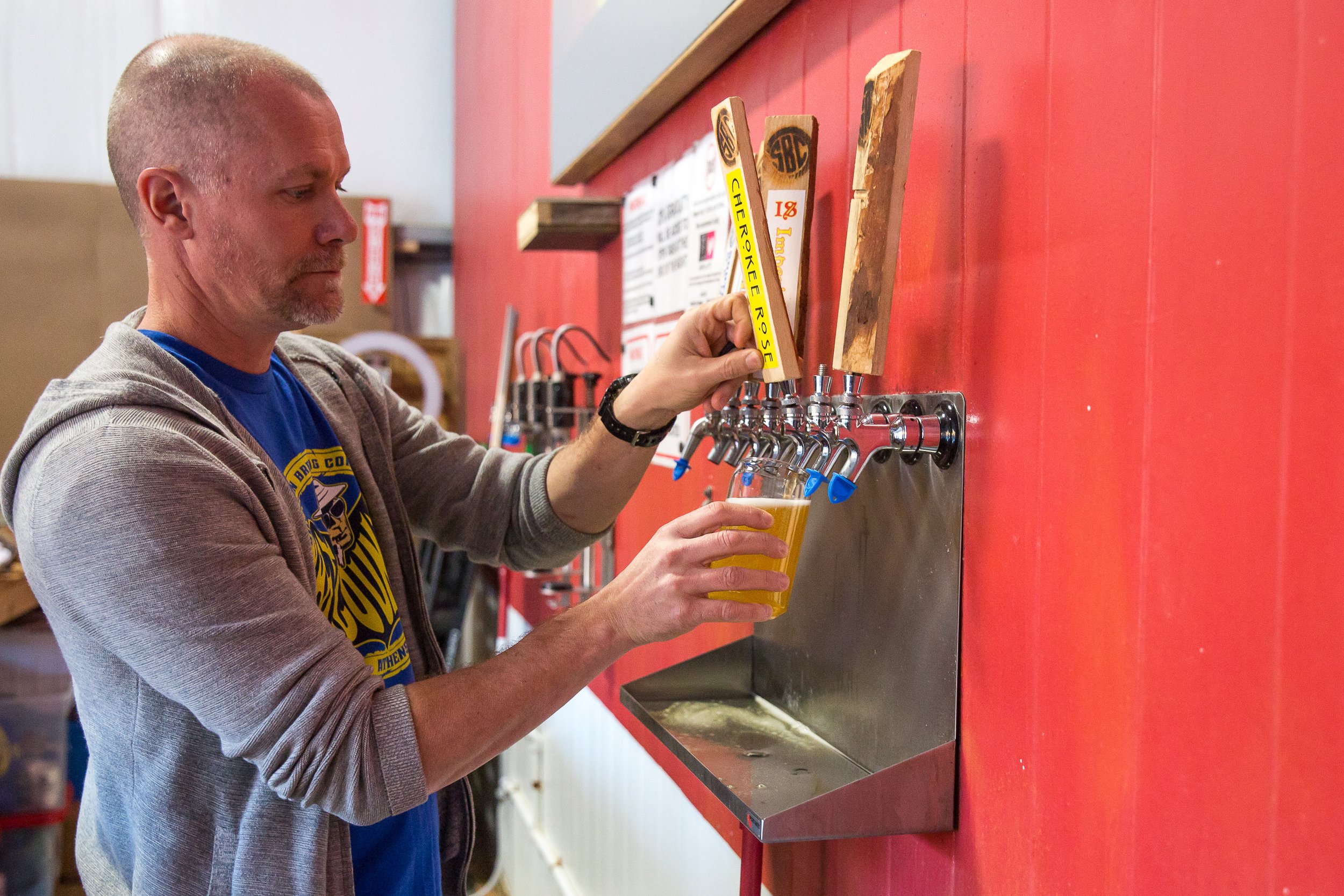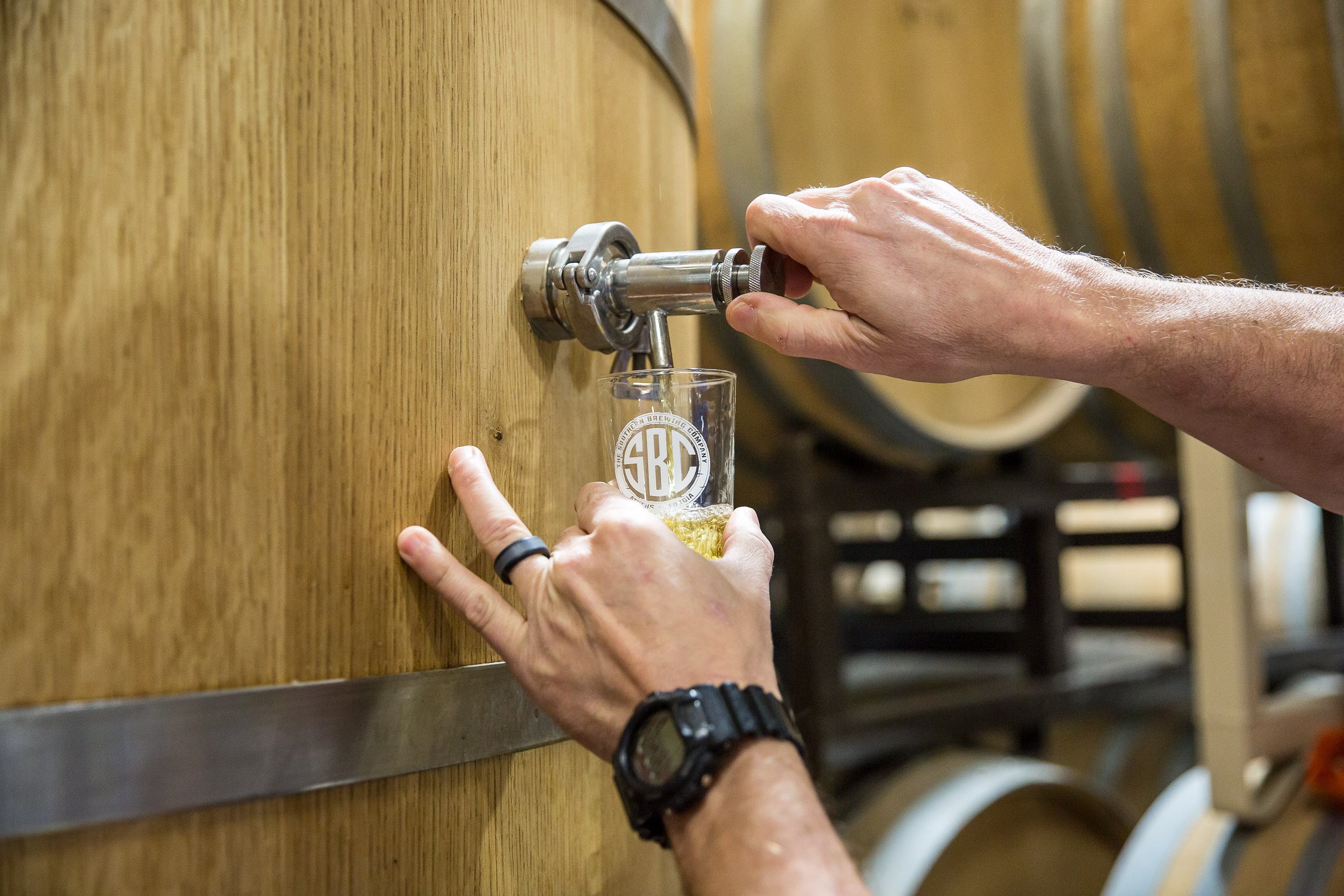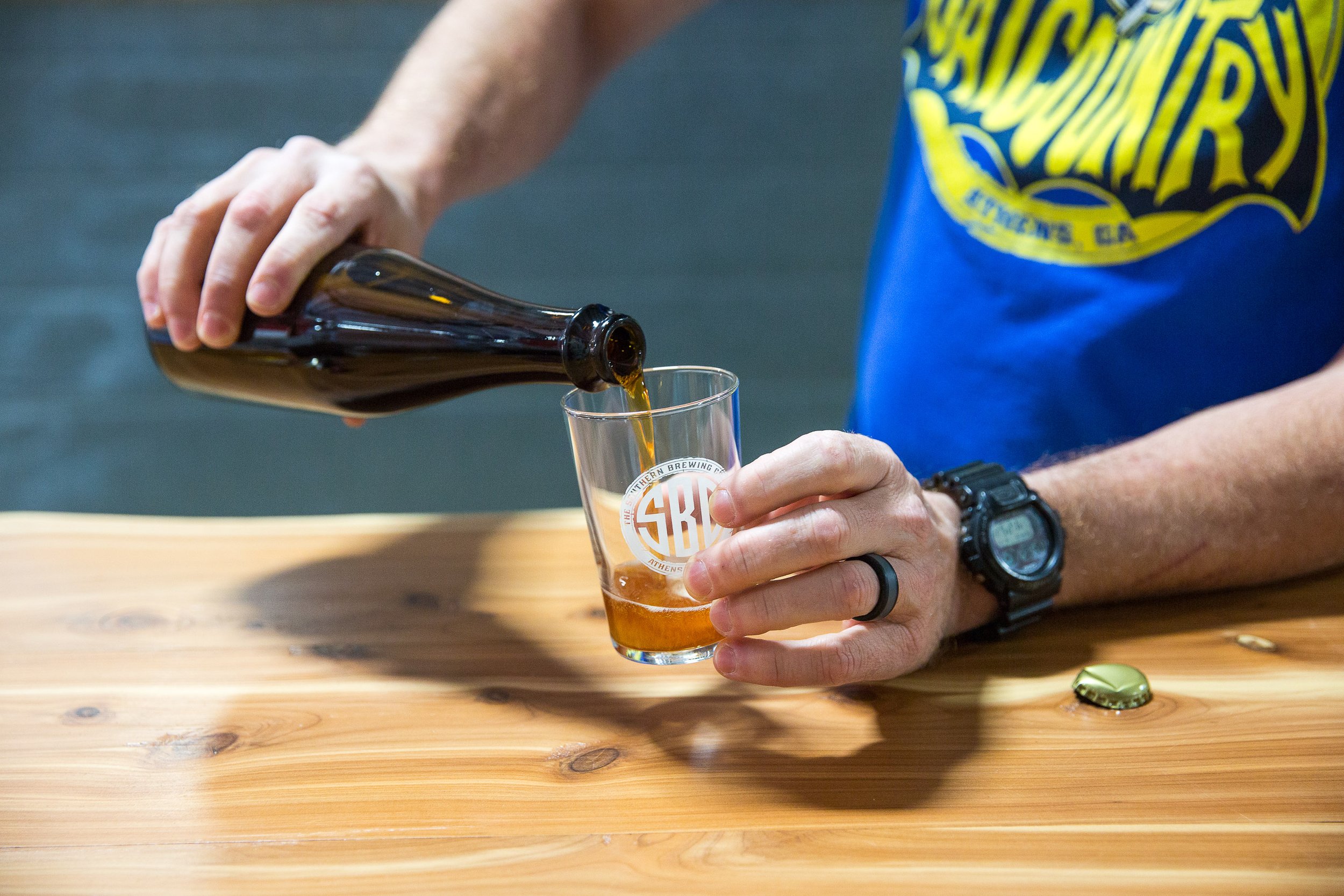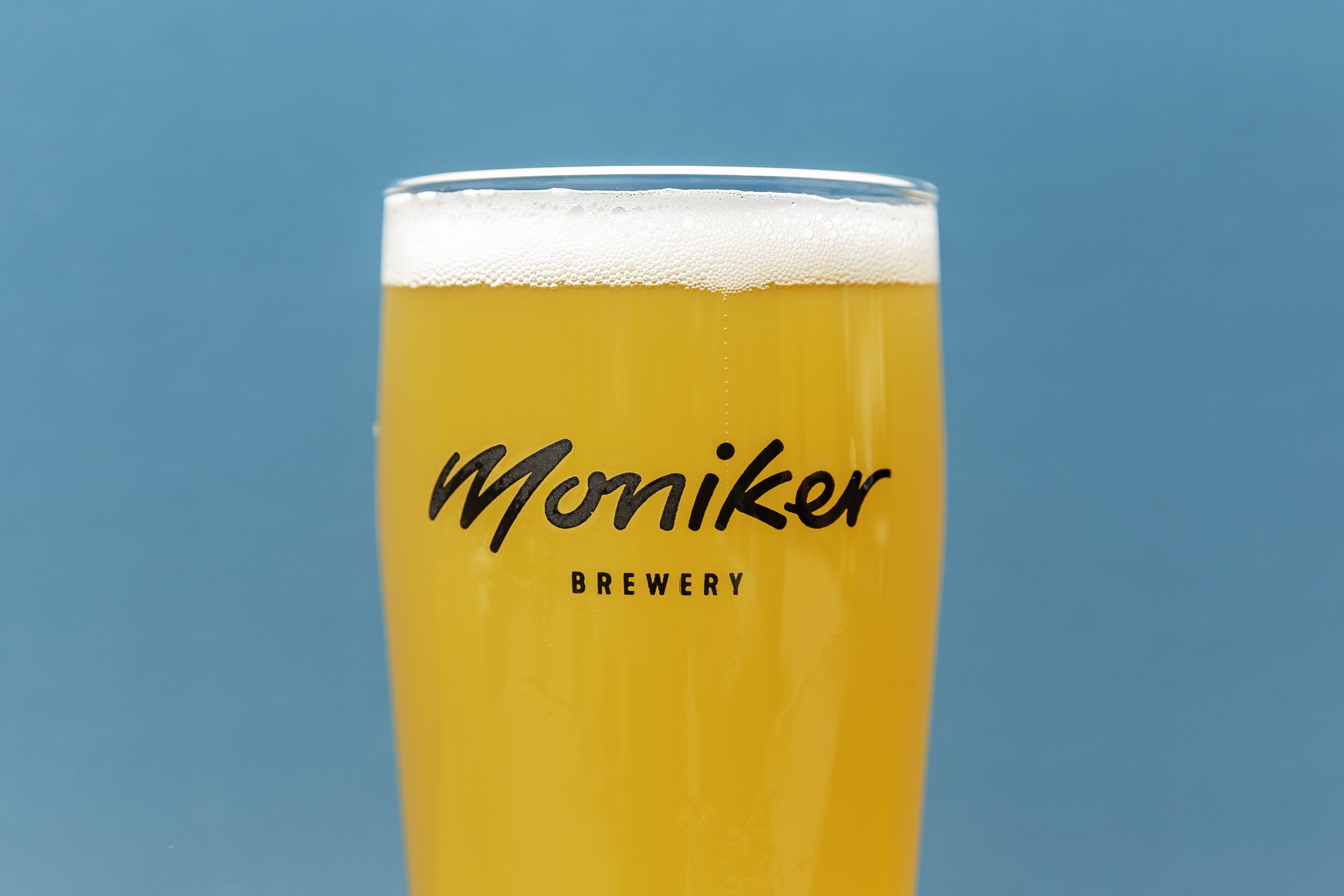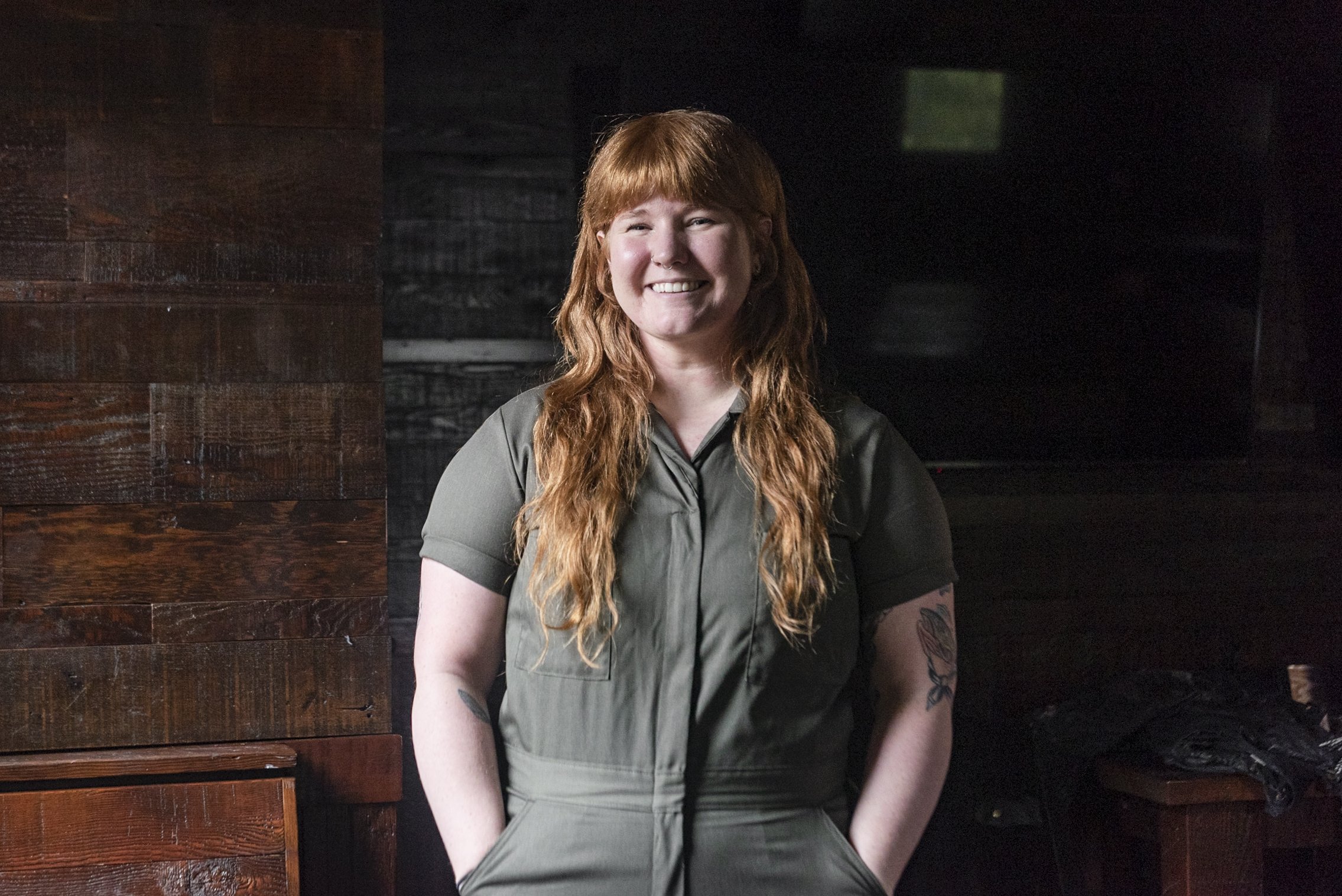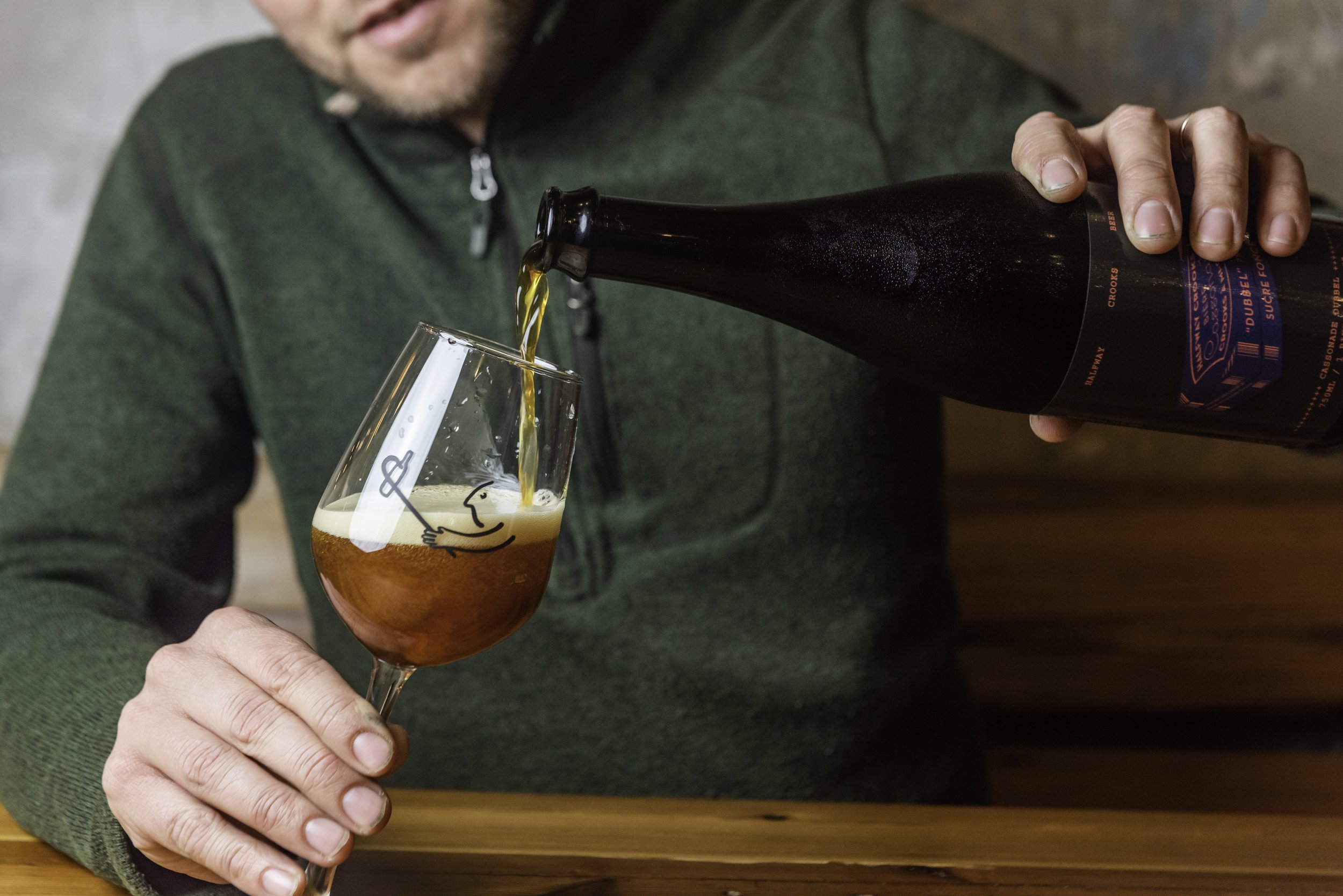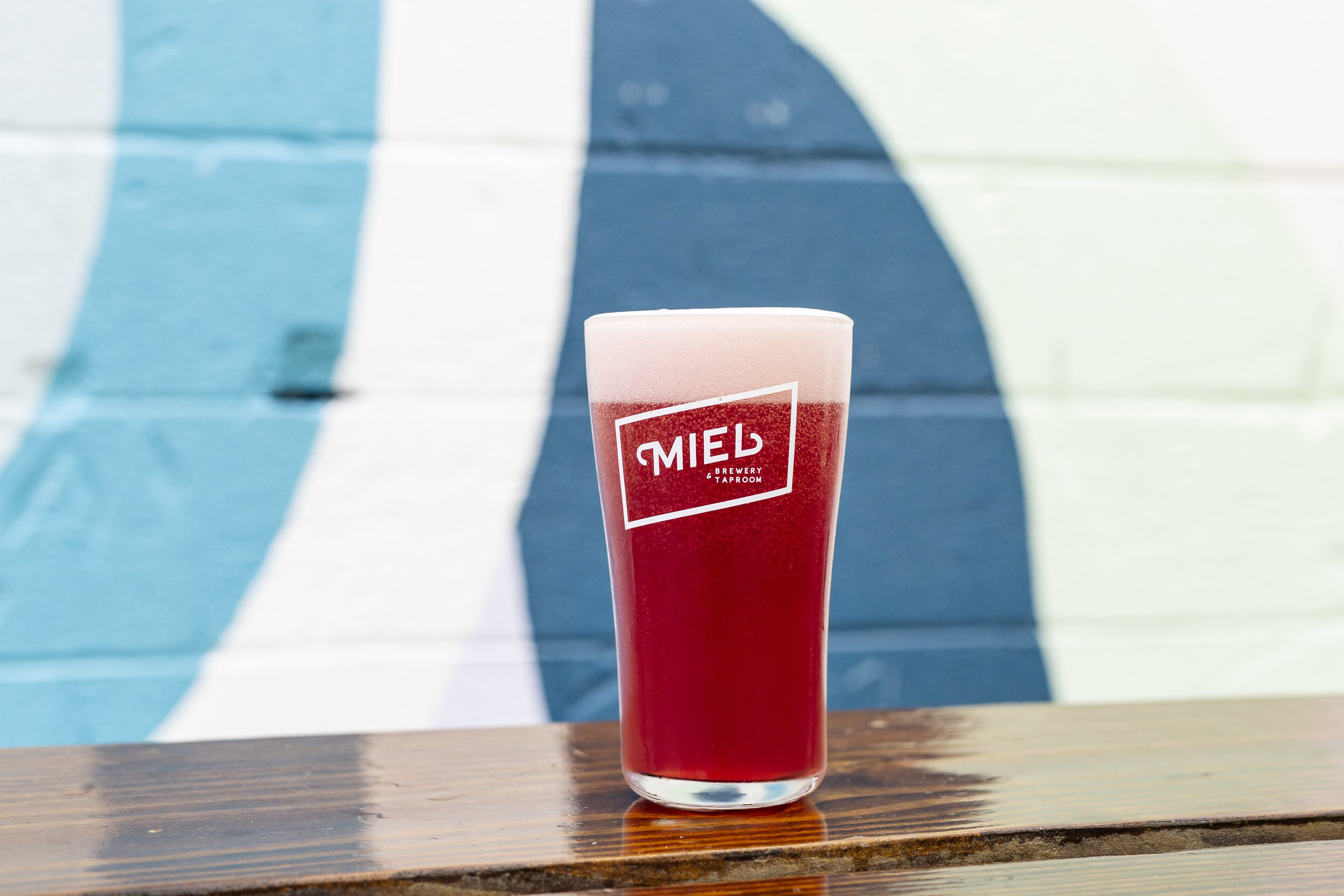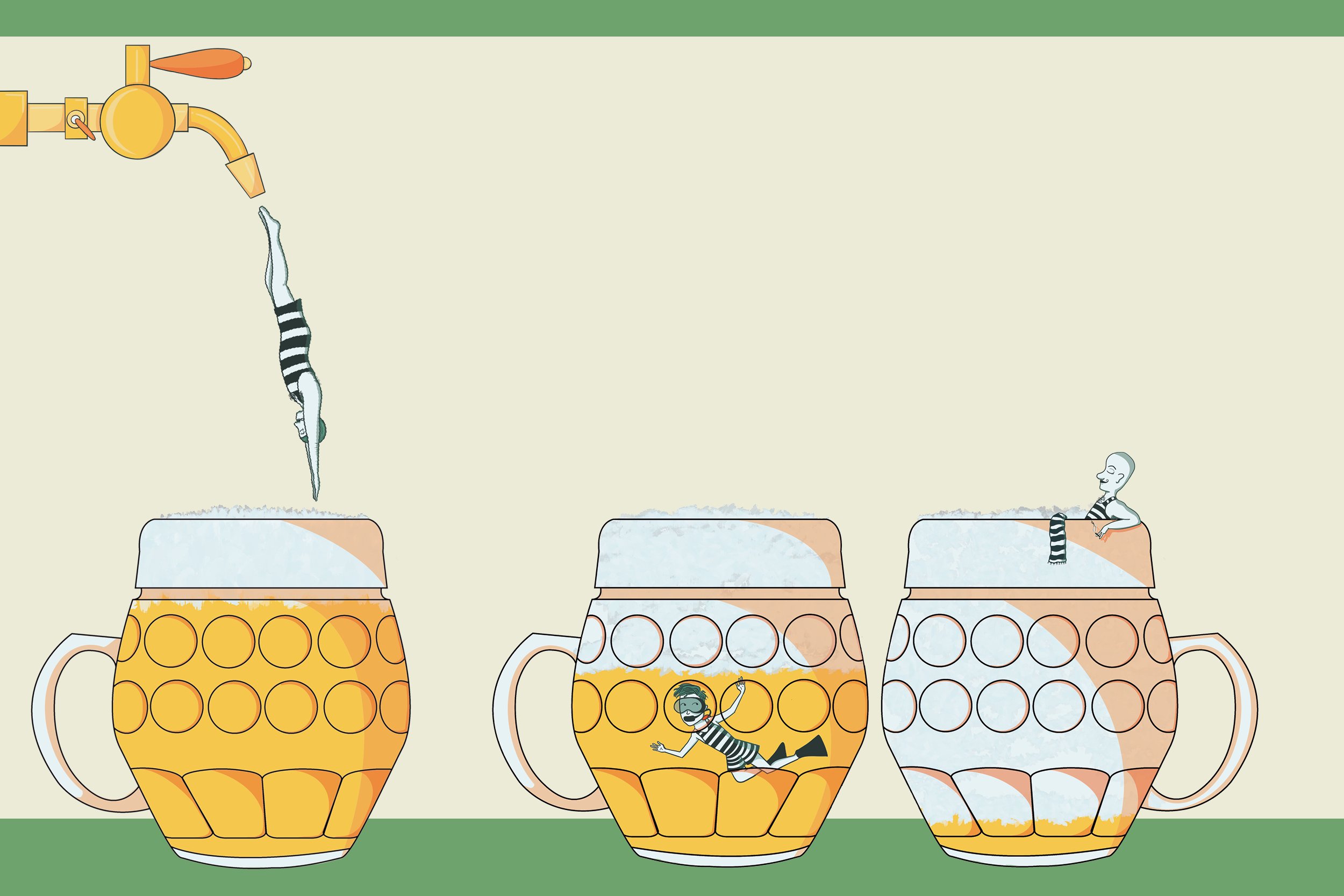When Evolutionary Biology, An Azalea, and Beer Collided in Athens
Feature A brewer discovers what beer might have tasted like had it been brewed hundreds of years ago in Athens, Georgia.
Brewer Brian Roth of Southern Brewing Company
Before co-founding Southern Brewing Company outside Athens, Georgia, Brewer Brian Roth taught a (no doubt well attended) course on the history of beer at the University of Georgia. Suds were brewed long before people understood the microorganisms responsible for fermentation. The invisible work that went on to turn wort into beer was like magic. In Belgium, everyone had a house culture: whatever yeast and bacteria were fl oating around the air and made their way into fermentation tanks. This is why many traditional styles can’t be replicated elsewhere and are a true expression of terroir. Roth wondered, if people had been brewing in Athens back then, what their house yeast would be.
Roth set out on a beer tour of Germany where he met Dr. Jeff Rapp, head of microbiology at Athens Tech and an avid home brewer since the 1980s. Rapp became Roth’s unoffi cial partner on his quest for yeast.
A few years before Southern Brewing Company opened its doors in May 2015, co-founders Roth and Rick Goddard acquired its 15-acre wooded lot. This is where Roth and Rapp began their search. “We had no idea if we would catch any yeast. As we developed our practices, we got better and better,” says Roth. They first attempted to capture wild yeast from the air. They failed, ending up with a plethora of bacteria instead.
The duo quickly revised methods. Roth and Rapp set out with 100-milliliter Erlenmeyer fl asks, each containing a portion of the same wort. Into these, they dropped fl ower blossoms. And it worked! Their fi rst successful yeastcapture came from a Cherokee Rose in Roth’s backyard, which Roth still brews with today. Within a couple of days, fermentation started. As soon as this happened, they transferred the microorganisms to petri dishes, separating a colony of yeast as soon as it appeared, until only clean colonies remained.
On their second attempt in March 2014, the duo struck gold. Roth and Rapp returned to the wooded lot and happened upon a wild azalea. As soon as they arrived at a clean colony, Rapp smelled the sample and bells started going off in his head. “It smelled sweet, perfume-y, and complex!”
Propagating the sample to brewworthiness was a lengthy process (you start with small batches and slowly build up your volume), but soon Roth was experimenting with the yeast. “It took us the better part of a year to realize that the wild azalea yeast was such an amazing yeast. It took another year to learn most of the ins and outs, but I would say that at the three-year mark, we knew everything that we needed to know or currently know.”
FROM THE AZORES TO ATHENS
The yeast’s fl exibility has proven impressive. “It has a dynamic range of temperatures and acidities,” says Roth. “It will make beautiful stone fruit or a bright lactic acidity in a Berliner-style (at a pretty low pH).” The yeast can also make low gravity beers—which can be a struggle for commercial yeast strains—or a 13.5 percent ABV mead.
As Roth experimented, he realized diff erent generations of the yeast behaved diff erently. He has pushed the yeast as far as six generations, but prefers to keep it to four. After that, it’s still a powerhouse but doesn’t lend the same fl avor profi le and aromatics.
When they first started experimenting with the yeast, Roth and Rapp used to joke around, “You try it, no you try it.” Rapp was relatively certain it wouldn’t be pathogenic to someone unless they were immunocompromised. Before brewing any commercial batches, however, Rapp used a basic DNA technique (PCR, the same method used at crime scenes) to amplify a small portion of yeast, run the DNA sequence, and match the yeast to another in an online database—to make sure it was harmless to humans. They matched the strain to one discovered in 1937 in the Azores (an archipelago in the midAtlantic), the yeast often found on the skin of wild plums.
HERE COME THE SCIENTISTS
Here’s where other scientists got involved. The University of Georgia has a large biomanufacturing program run by Dr. David Blum, whose students have gone on to work with Roth at the brewery. Additionally, Dr. Bill Lanzilotta in the biochemistry department at UGA started propagating yeasts for Roth using an old fermenter from Blum’s lab. Rapp would propagate up to a liter of the sample, hand it off to Lanzilotta, and a day or two later receive 26 liters, enough to pitch a commercial batch*—a process that would have taken Roth and Rapp four to five months.
Dr. Douda Bensasson studies wild yeasts exclusively, and saccharomyces cerevisiae specifi cally. She was working in England when a colleague shared an article about Roth’s experiments. A lot of research on wild yeast focuses on wine, not beer. Bensasson was excited. She relocated to Georgia in 2016 to accept a job at UGA and soon got involved with Roth’s project. She praises Roth on his controlled environment and detailed records. Bensasson started running full genome sequences on beers from around the world, and on Roth’s wild azalea yeast. She has identifi ed compounds in yeasts that result in certain fl avors, namely 4-vinyl guaiacol (4VG), which may create desirable fl avor in wheat beers, but in many styles or in too large quantities is considered an “off fl avor” and representative of contamination by wild yeasts. Bensasson pinpointed this compound in a sample she mapped for Roth and Rapp, collected from an oak tree at the UGA State Botanical Gardens. By her predictions, the beer won’t taste good until it knocks out this gene, but she’ll wait for Roth’s brewing experiments to know for sure.
WILD YEAST, DOMESTICATED
As Roth brews with generations of the wild azalea yeast, the genome sequence changes, only slightly, but it can lead to noticeable differences. By selectively keeping the samples that create “tasty” beer, Roth and other brewers are changing the yeast. Bensasson and her team at UGA want to map the metamorphosis. As she points out, this begs an interesting philosophical question: At what point does yeast become domesticated?
This is only a small piece of Bensasson’s research, which relates to evolutionary biology as it pertains to wild yeasts. She is interested in answering some of the big picture questions. “Are there predictable changes that happen when you domesticate an organism? Will it create sickness (as evident in purebred dogs)? Can you avoid sickness? Can you predict how an organism will change over time?” Roth, meanwhile, continues his experiments. Many breweries want to brew with wild yeasts without fear of contaminating their systems, so in addition to their own recipes, Southern has collaborated on beers with 20 to 30 breweries, mostly from the Southeast. Roth and Rapp continue to collect wild yeasts. They now have 87 distinct Athenian strains, all stored at -80ºF. Roth has tasted almost all of them, but only brewed official batches of beer with about 12.
YEAST CHARACTERISTICS BY GENERATION
First Generation Style: Berliner Fermentation Temperature: 82ºF to 85ºF Character: Stone fruit esters, bright lactic acidity Extras: Light kettle sour using Lactobacillus plantarum
Second Generation Style: Sour stout Fermentation Temperature: ~78ºF Character: Light bodied, tart, with a little residual sugar. Tawny. Extras: Second runnings off imperial stout. Lightly kettle-soured with Lactobacilluss plantarum
Third Generation: Style: Saison, the yeast won’t drop below a pH of 4.1 Fermentation Temperature: 72ºF to 75ºF, dropped to 68ºF for a day or two to clean it up Character: Stone fruit esters (mango/peach/papaya) Extras: Strisselpalt hops but the infl uence is unremarkable—the yeast drives character
Fourth Generation Style: Session IPA Fermentation Temperature: Starts at 70ºF, ramps up to 72ºF for a day, then 68ºF for the last few days (this is where the magic happens). Character: Spicy estery-ness. The yeast loses the ability to fl occulate, resulting in a hazy, light-golden pour. Extras: Azacca hops to complement the stone fruit esters

